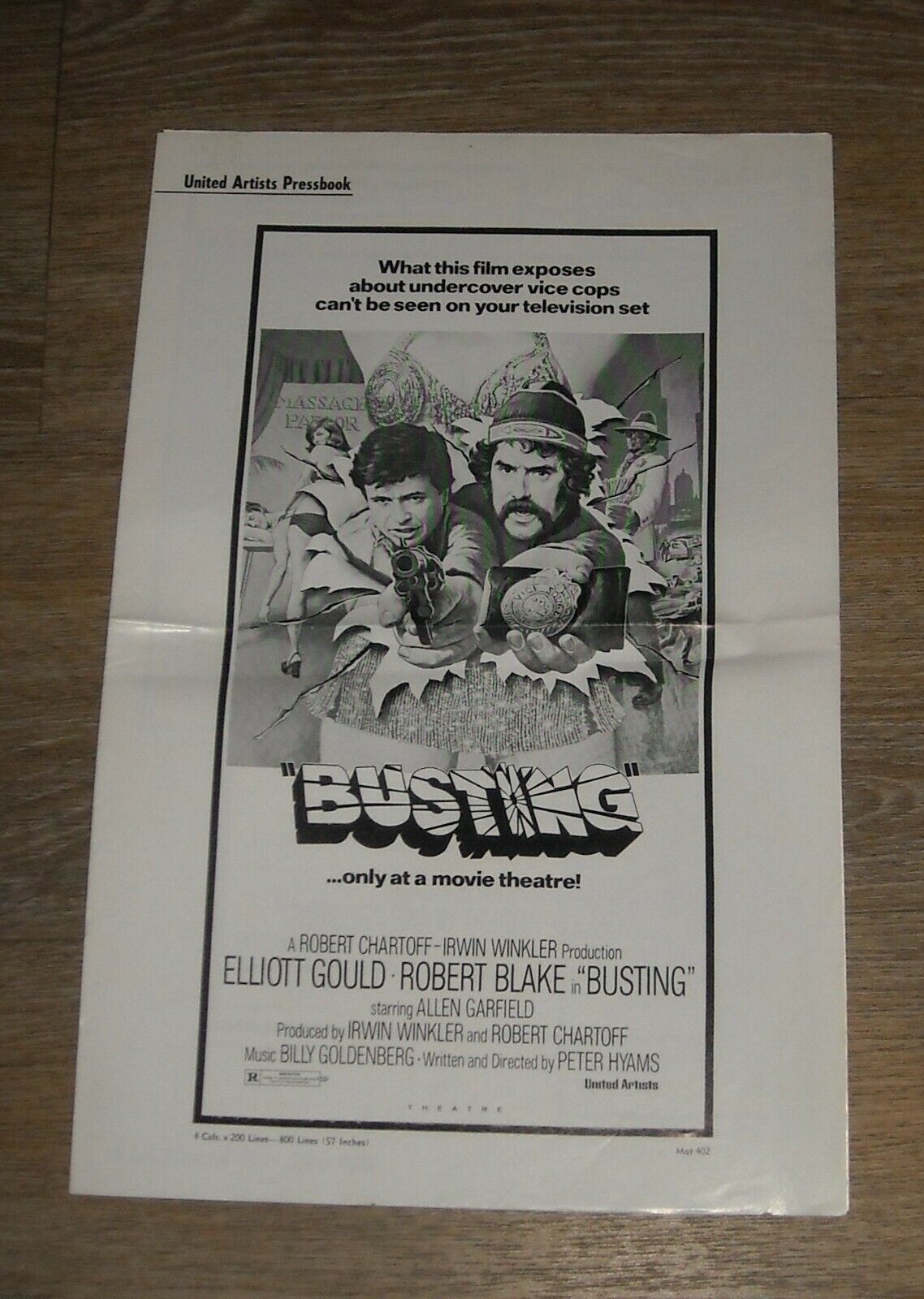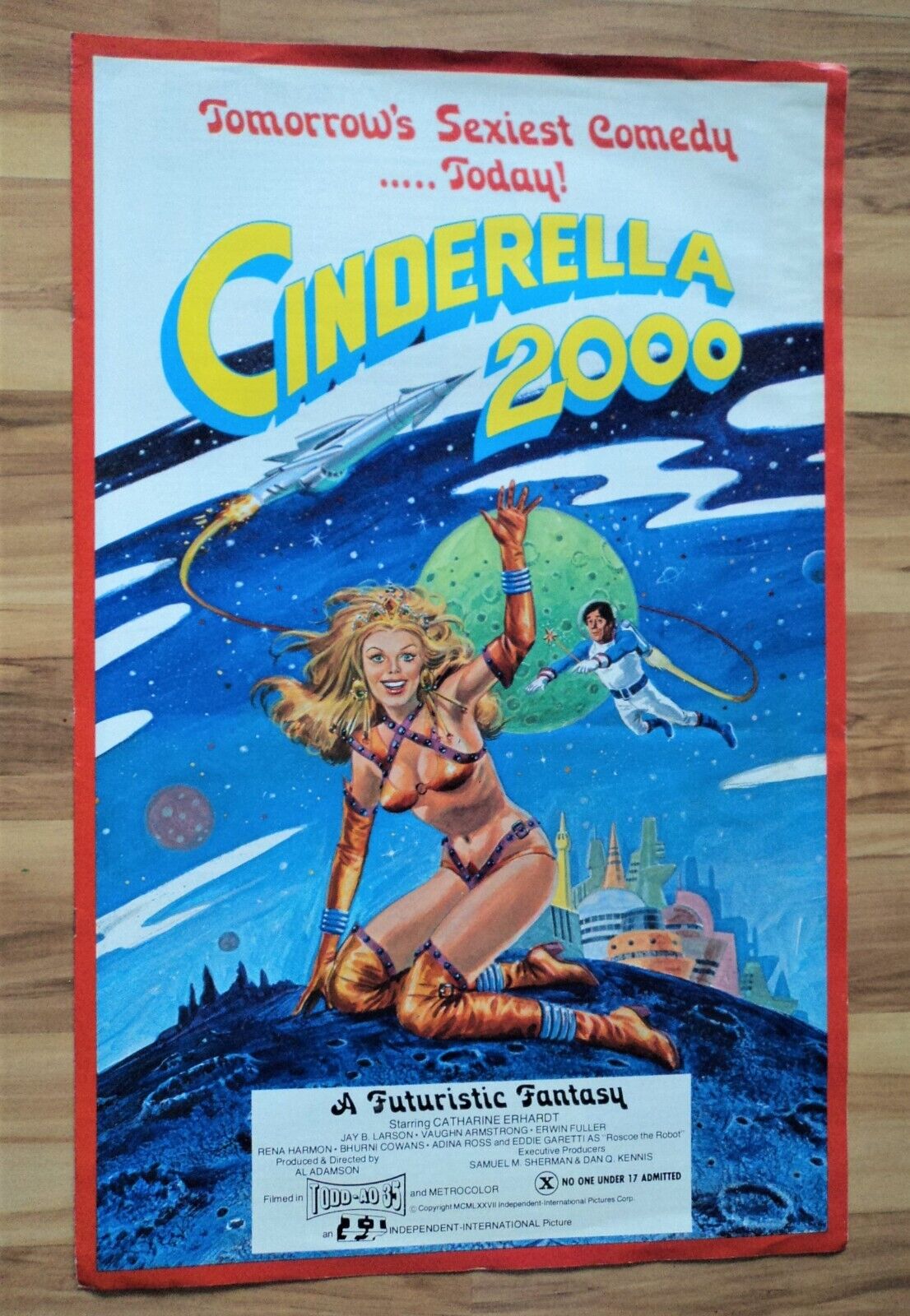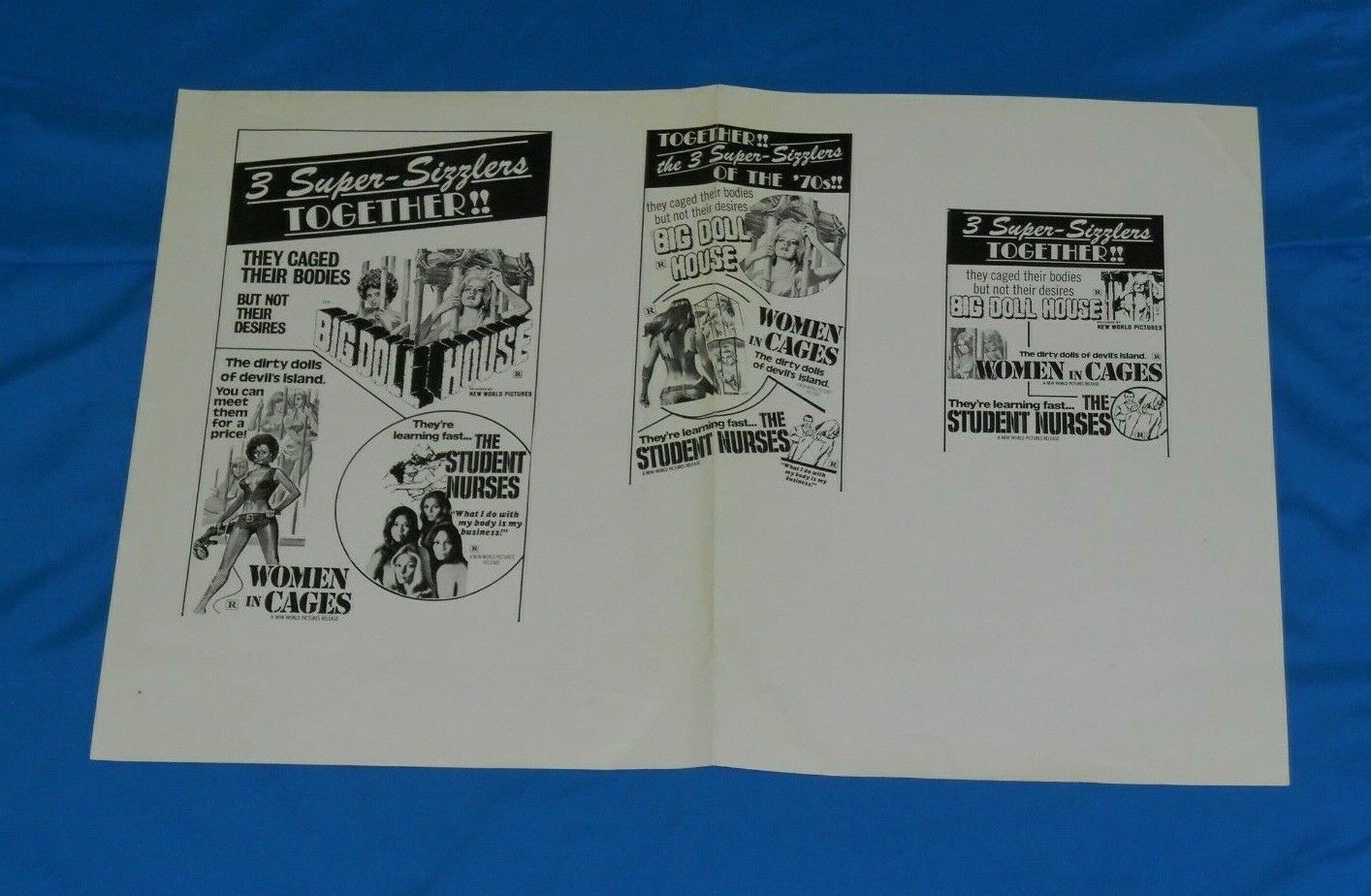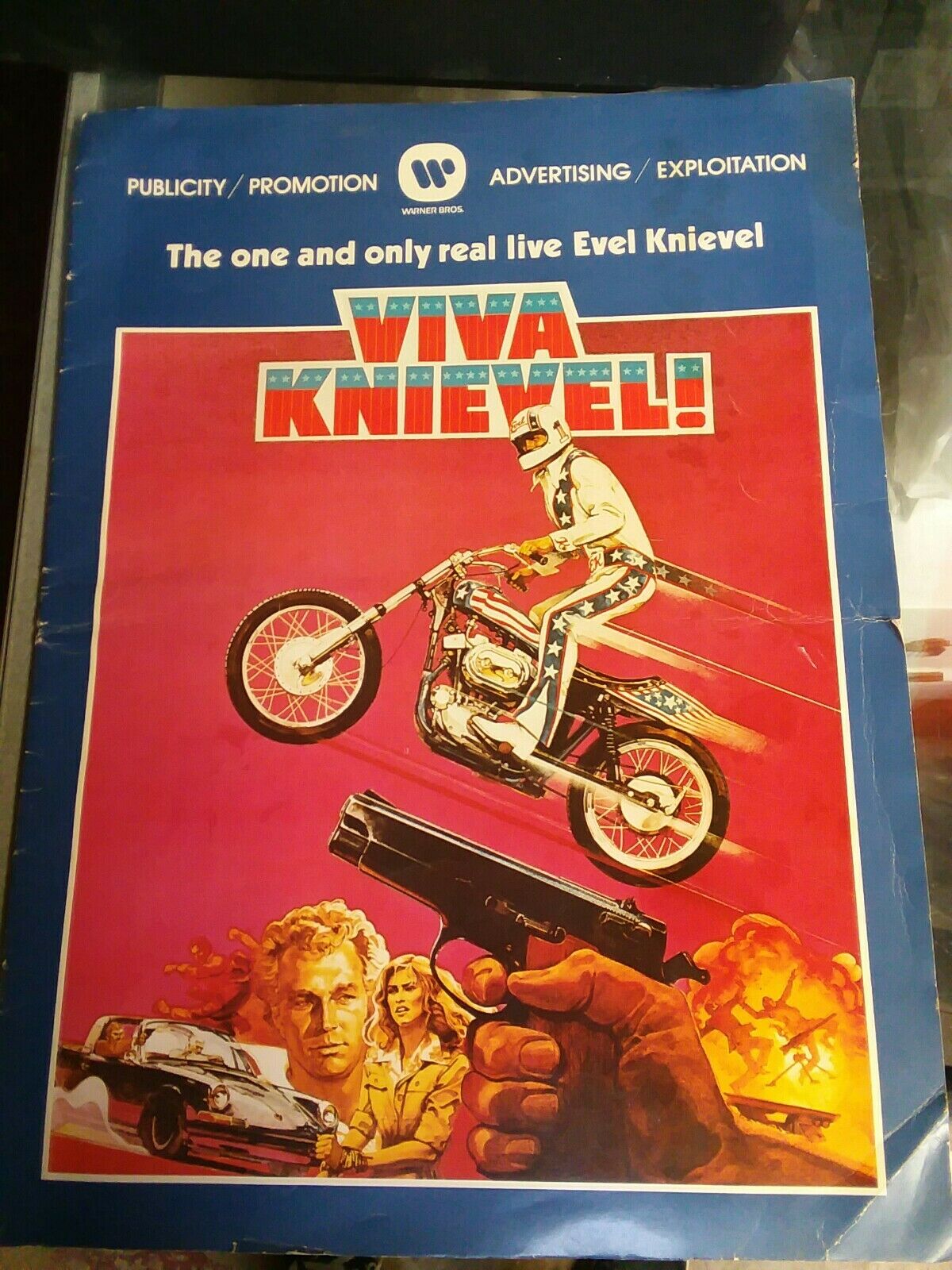-40%
SOYLENT GREEN pressbook 1973 art of Charlton Heston trying to escape riot
$ 17.74
- Description
- Size Guide
Description
An Original VintageTheatrical SOYLENT GREEN
Movie Pressbook (pb; measures 8 1/2" x 13 1/2" [22 x 34 cm]; 24 pages)
Important Added Info:
Also note that this pressbook is complete and uncut! Given that theater owners purchased pressbooks partly in order to create their newspaper advertising, and quite frequently cut them up for that purpose, it is rare to find a pressbook that IS complete and uncut!
Condition:
very good, NO CUTS.
The pressbook is complete and uncut. Buyer adds shipping.
Important Added Info:
Also note that this pressbook is complete and uncut! Given that theater owners purchased pressbooks partly in order to create their newspaper advertising, and quite frequently cut them up for that purpose, it is rare to find a pressbook that IS complete and uncut! Buyer adds shipping.
Condition:
very good to fine, NO CUTS.
The pressbook is complete and uncut and is in nice condition!
Pressbooks
were special advertising booklets sent directly to theater owners that were playing the specific movie advertised in a particular pressbook (almost all pressbooks were for one movie only, although there were some double-bill pressbooks). A pressbook was made for every movie, starting in the mid 1910s through the 1970s (somewhere in the late 1960s, studios introduced "presskits", which included brochures and stills from the movie, but
NO
images of the posters, and for a few years, they made both, but then they stopped making pressbooks and only made presskits). There is no "standard" measurement for them, though each studio
usually
issued them at the same measurement during different periods of time.
Each pressbook (especially the early ones) is filled with lots of information about the movie that is contained no where else, including pictures of many of the posters and articles and ads as well, and the cover of the pressbook is often a color poster that could be framed, and on older pressbooks there is often a "sample" full-color herald attached to the pressbook, and yet, because many collectors don't know about pressbooks, the entire pressbook often sells for less than the price of a single lobby card from the same movie!
Pressbooks were sent to movie theater owners to help them promote the film. They have lots of "newspaper" black and white ads in various sizes for theaters to use in their local newspaper (theater owners would literally cut out the ad they wanted to use and give it to their local paper, which is precisely why so many pressbooks have ads cut out of them). For collectors, the most important thing about pressbooks is that they show many of the posters that were created for the film (one-sheet, three-sheet, etc.).
Sometimes not a single copy of a poster is known to exist and the only way you can tell what the poster looked like is by looking at a picture of it in the pressbook. In addition to poster images and newspaper ads, most pressbooks also have a synopsis of the film and other information like stories about several of the stars and sometimes a story about the making of the film, profiles of the lead actors, etc. Many pressbooks include unusual ways to promote the film such as having a nurse at the theater in case anyone fainted, vomit bags for queasy patrons, etc. They often contain info on other promotional items like photos, radio spots and standees that were available to the theater owner, most of which are not currently known.
In format, pressbooks are very similar to comic books. They often have two-color or full-color covers, but almost always have black & white interiors. Generally, the most important the film, and the older the film, the more elaborate the pressbook (larger size and greater number of pages).
Note that pressbooks often contain single sided pages. When we are auctioning a pressbook, we list the number of pages in a pressbook, and that number refers to the number of
SIDES
of pages that have printing. If a pressbook has 10 pages with printing on one side each, we say it has 10 pages; if it has 10 pages with printing on both sides each, we say it has 20 pages.
Pressbooks are almost always extremely difficult to find from pre-1960 films and are rapidly becoming more and more desirable, as more collectors learn of them! Often pressbooks sell for the same or less than a scene lobby card from the same film, yet they give so much more and are much more difficult to find!











